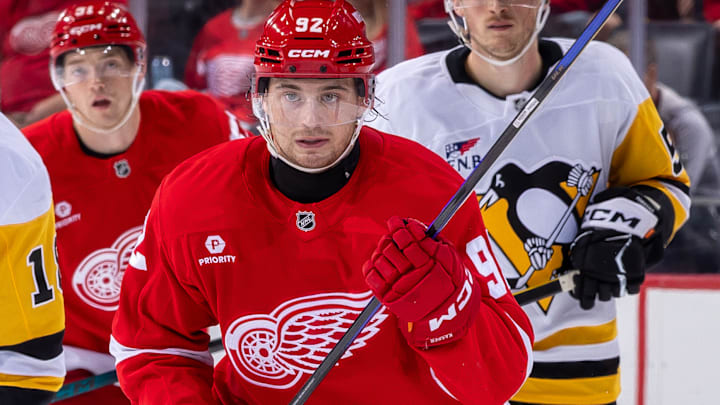In his breakdown of the winners and losers of the Kirill Kaprizov deal, Greg Wyshynski of ESPN quipped, "The era of player retention continues." For the Detroit Red Wings, with the NHL entrenched in this new era of players sticking around with their teams, this is very, very good news.
Wyshynski further noted, "The upper limit of the NHL salary cap this season is $95.5 million. It has been estimated that the ceiling will be at least $104 million in 2026-27, the first time the NHL's salary cap will have crested the century mark. Some predicted this inflation would lead to a spike in player movement, as teams had more to spend on acquiring talent.
"On the contrary, the rising cap has seen teams retain their players throughout the offseason, no longer sweating out the pressure points that the cap created. Kaprizov is the latest name to stay where his stuff is, and he's probably not the last."
It makes sense that rising cap numbers will increase the likelihood of players signing extensions with their current teams, since NHL front offices have more cap flexibility. And for Red Wings general manager Steve Yzerman, who already has his top three players locked into long-term deals, this trend is a major win.
Rising salary cap and player retention is what the Detroit Red Wings needed
Five years ago, keeping a core of up to eight players while the other 15 in the 23-man lineup were mere rentals on short-term deals meant an NHL front office did a good job managing the salary cap. With substantial increases to the cap, now Yzerman can ink eligible players like Simon Edvinsson to a long-term deal this season without worrying so much about how he's supposed to keep contributors like Marco Kasper and Albert Johansson in Hockeytown when they're eligible in 2026.
Not to mention, players like Axel Sandin-Pellikka, Nate Danielson, and, if he gets it together, Sebastian Cossa, will find themselves in the running for long-term extensions as the decade starts nearing its end. This would have been much harder before the rising cap, when executives had to make tough decisions on who to keep long-term, who to trade, and who to let walk in free agency.
In an even better-case scenario, Moritz Seider, Dylan Larkin, and Lucas Raymond are all on reasonable deals, with Larkin's $8.7 million AAV leading the way. Should Yzerman lock a few more core players into slightly smaller deals in the $5 million to $8 million range, the Wings could theoretically have between 10 and 12 players in that core he's been building locked in come 2028-29.
And remember, the salary cap still has another projected jump to $113.5 million in 2027-28, giving Yzerman even more money to spend. So, should players around the league stick around in the same uniform, then the most dominant teams toward the end of the decade will be those who have the best young cores and prospect pools in hockey right now.
Don't think Steve Yzerman doesn't know this
Steve Yzerman, for all the criticism he takes, has displayed two qualities that every general manager in sports should have: Patience and foresight. Going so many seasons without a playoff berth despite six years as the organization's top decision maker in player personnel alone shows Yzerman's patience.
But foresight is rare in sports, especially since it can be so unpredictable. Still, Yzerman, for someone to have so much patience, had a picture in his mind of what his lineup was going to look like when they did start contending. Tack on the rising cap, and you can be sure that Yzerman knows what he's going to do and how he's going to keep his existing talent in Hockeytown.
Should "the era of player retention" keep rolling, it will play into Yzerman's and the Red Wings' hands. And that might lead to multiple championship runs.
